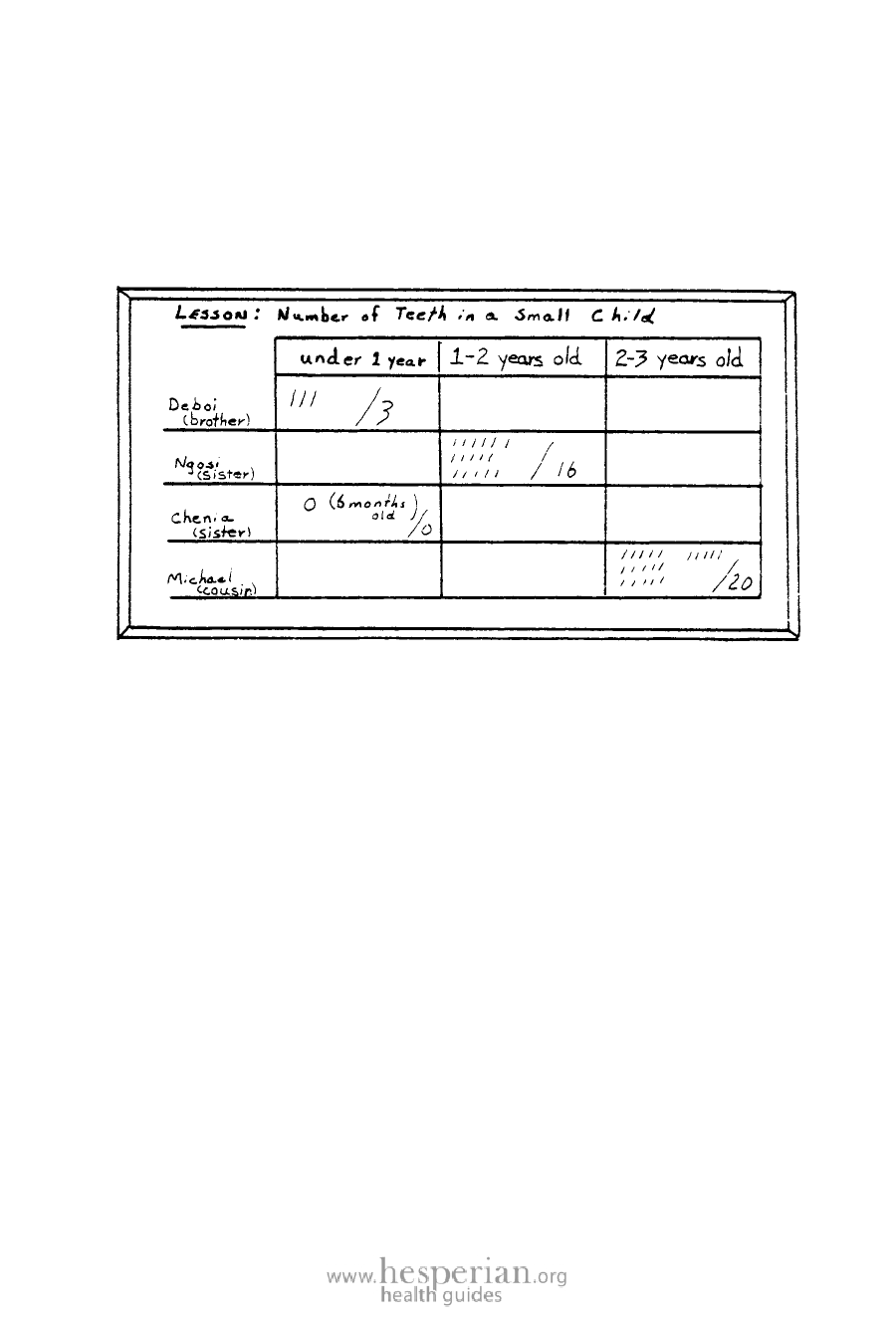
Where There Is No Dentist 2012 45
Discuss the number of teeth children have at different ages. Young children
6 to 12 years old, for example, have 24 teeth; older students, 28 teeth; and
most adults, 32 teeth.
At home, students can count brothers’ and sisters’ teeth to learn how many
teeth small children have. Count only the teeth and not the spaces.
Ask the students what other things they saw inside someone else’s mouth.
This is a good time for students to discover important things about good
health practices. Encourage them to learn as much as they can from what
they see, and then show them how to use a book like this to answer their
own questions, For example, if students see cavities and red bleeding gums,
you can start a discussion on tooth decay and gum disease. Use some of the
activities on pages 55 to 60.
For another example, if the students see a baby who has only a few teeth,
they may have some interesting questions. Show them this book and invite
them to read pages 63 to 65 to find answers to questions like these.
• Can Chenia, who is 6 months old and has no teeth, eat soft foods?
Should she have more than just breast milk?
• When Chenia’s teeth grow in, will they give her diarrhea and fever?
• Will a 2-year-old girl get more baby teeth?
• Why do we care for baby teeth, when we only need them for a few
years?